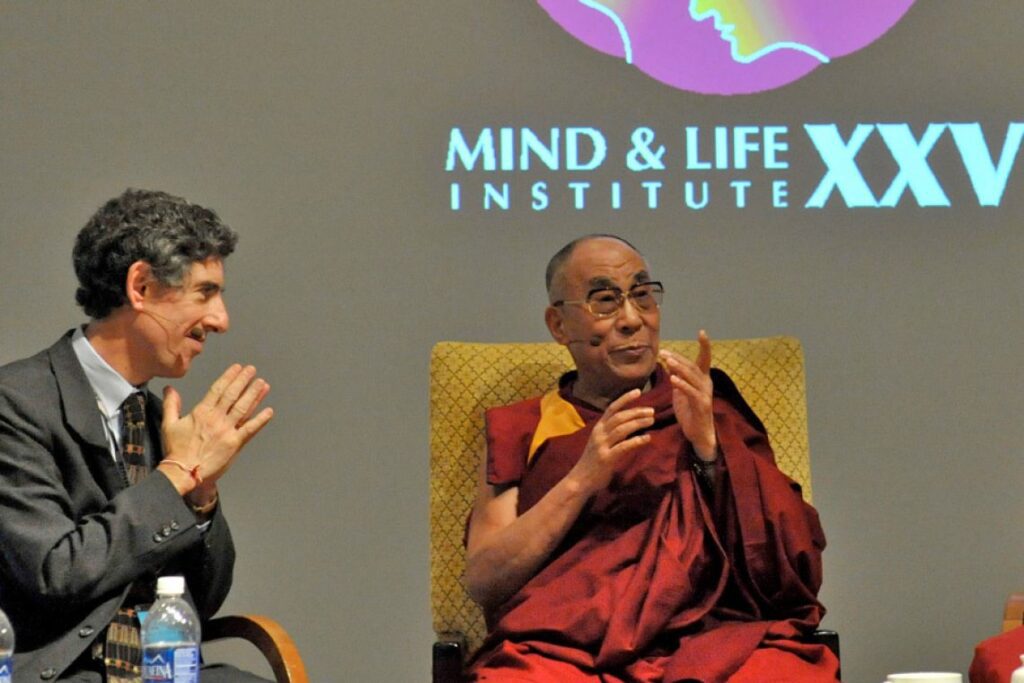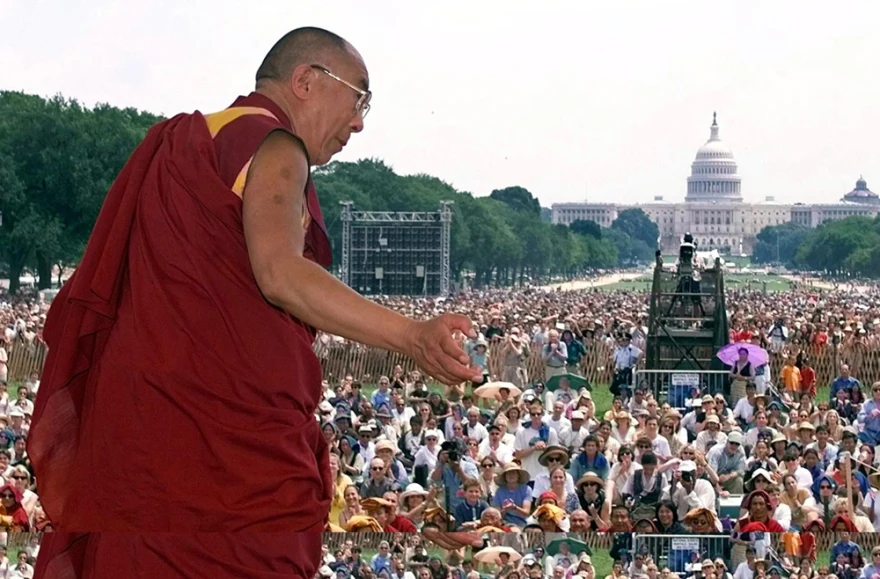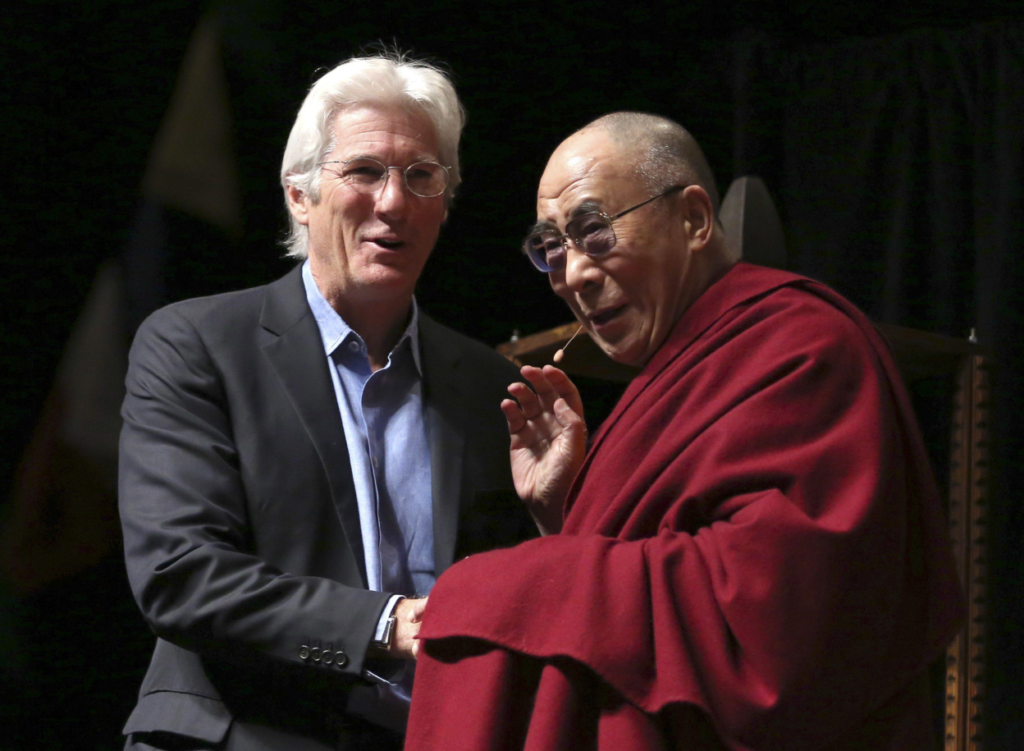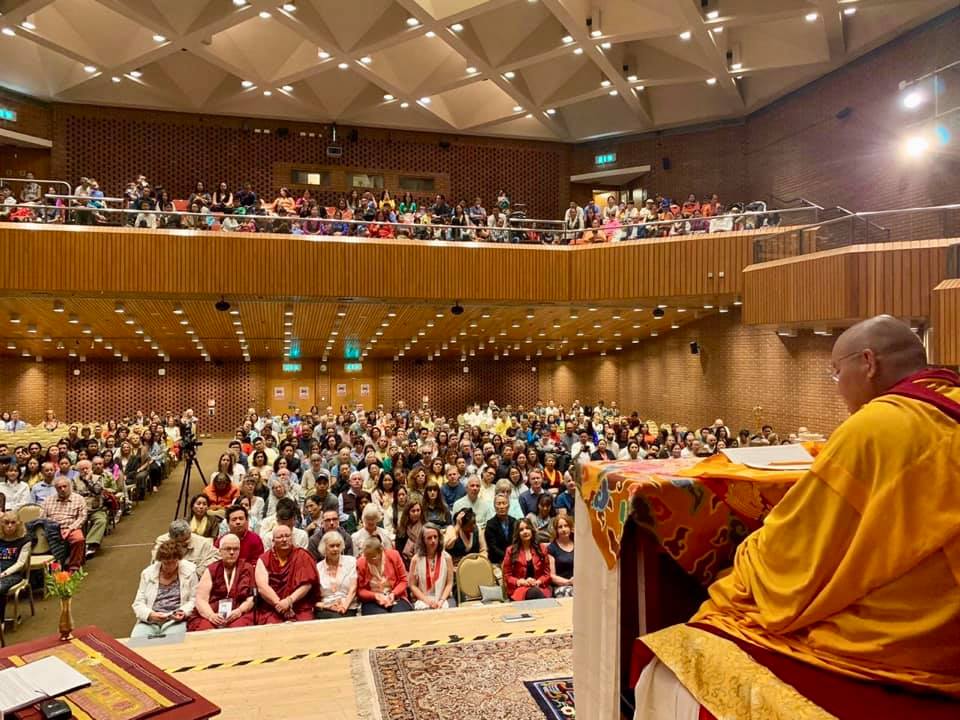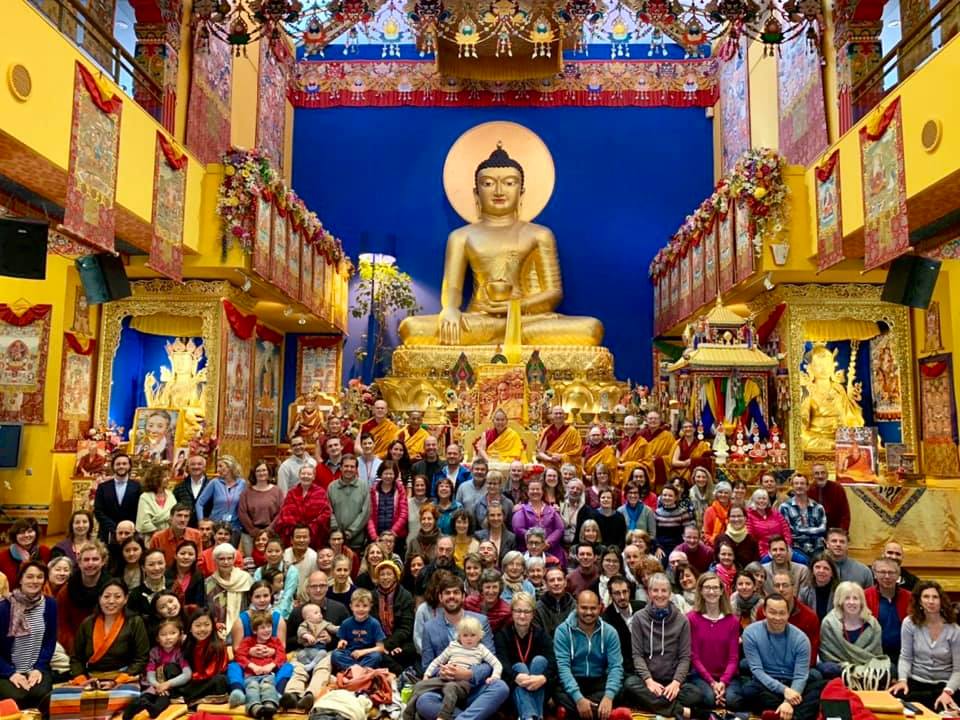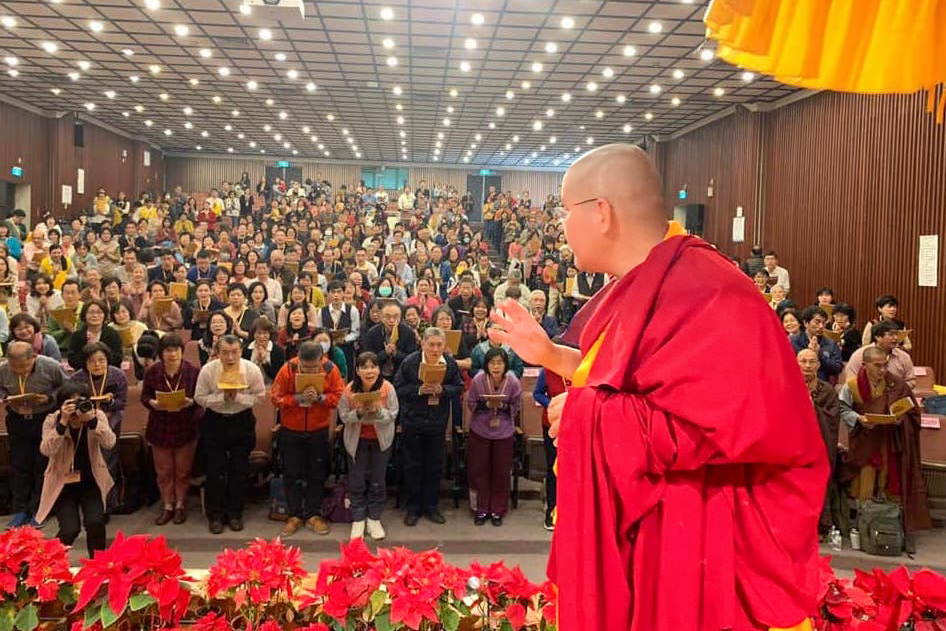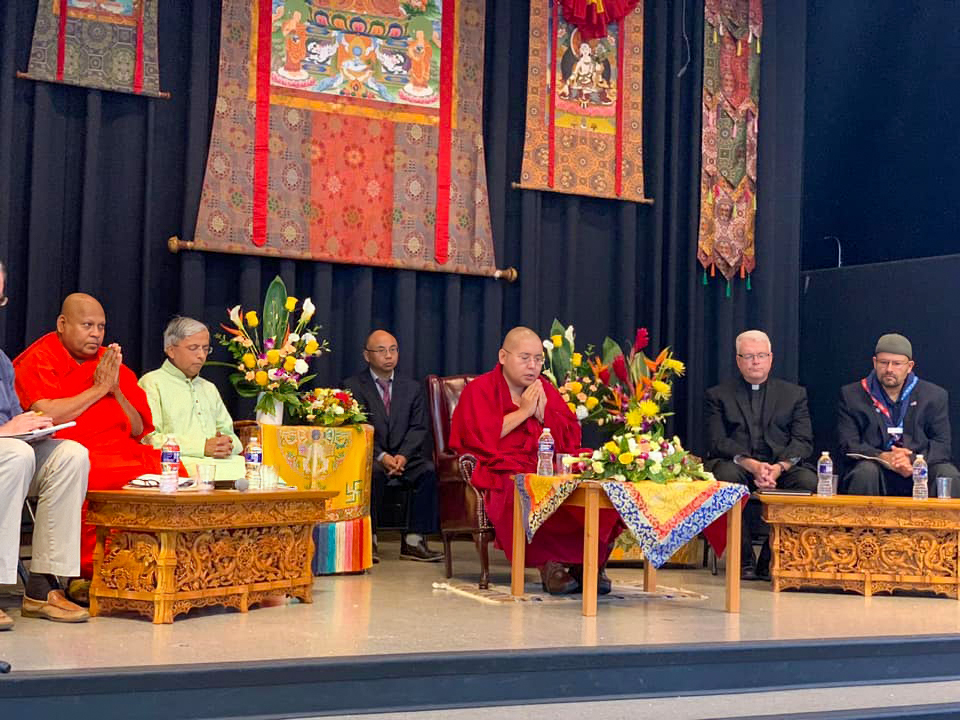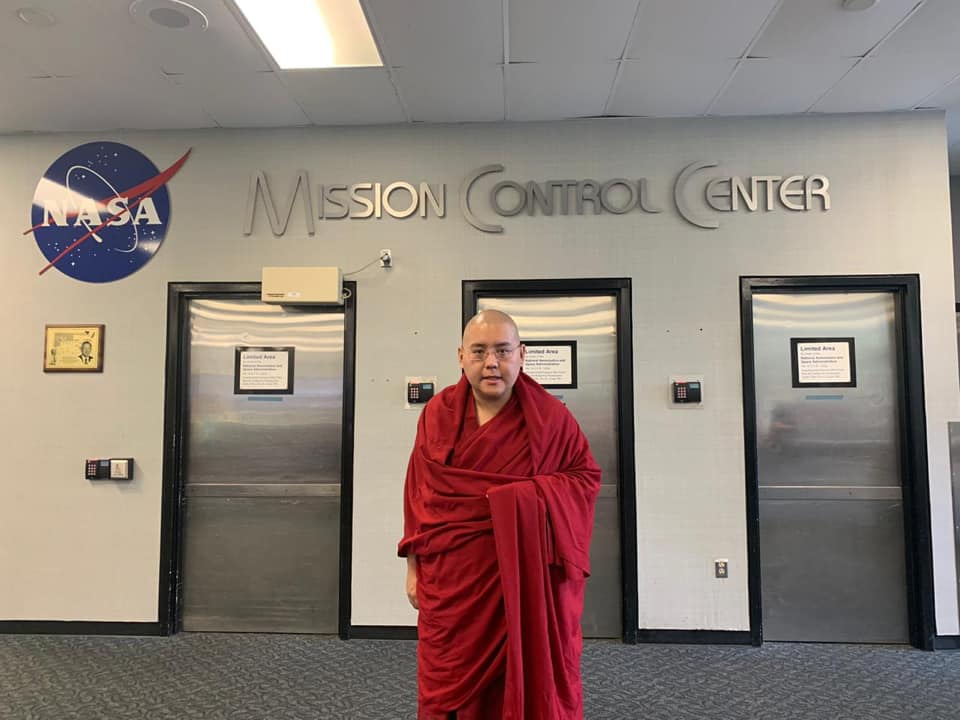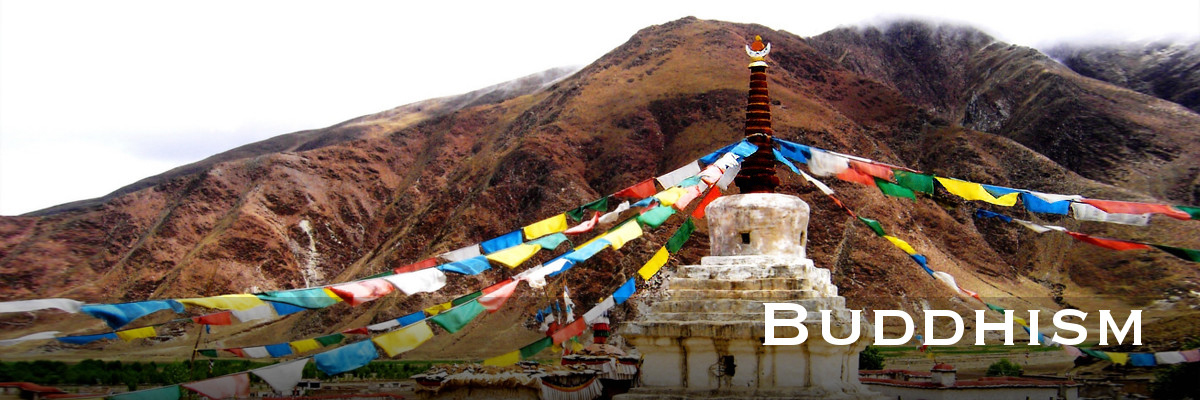About Buddhism
Buddhism is based on the teachings of an Indian prince, who was born about 2,500 years ago. At the age of 29 the sheltered Siddhartha Gotama was shocked by the suffering he saw outside the palace walls and left a life of luxury to seek answers. He renounced his princely title and became a monk, depriving himself of worldly possessions with the hope of comprehending the truth of the world around him. After six years the culmination of his search occurred while meditating under a Bodhi tree, when he finally understood how to be free from suffering and achieved enlightenment.

He became known as the Buddha or “Awakened One” and journeyed around India for the next 45 years teaching others the Dharma or Truth of what he had come to understand. Although the Buddha taught many things, the Four Noble Truths are the essence of his teachings. They are:
- The truth of suffering
- The truth of the cause of suffering
- The truth of the end of suffering
- The truth of the path that leads to the end of suffering.
After Buddha died two major schools arose from the foundation of his fundamental teachings.
Theravada: The ideal of practice is the Arhat, the individual who practices the eight-fold path to realize liberation from suffering.
Mahayana: The ideal of practice is the Bodhisattva, the individual who aspires to attain the highest awakening through helping all beings become liberated from suffering.
Buddhism Comes to Tibet
King Songtsen Gampo unified Tibet in the 7th Century through military conquest and took two Buddhist wives — one from Nepal and China. He built the first Buddhist temples and put Tibetan translators to work on translating Indian Buddhist scriptures from Sanskrit. In the 8th Century during the reign of King Trisong Detsen, Buddhism became the official religion of the Tibetan people. The King invited the renowned Indian Buddhist scholar Shantarakshita, who was the Abbot of Nalanda monastery, one of the greatest centers of learning in ancient India. Shantarakshita ordained the first Tibetan monks, oversaw the translation of a large number of scriptures into Tibetan and consecrated the first monastery. According to popular Tibetan stories, Shantarakshita also advised the King to invite the celebrated Indian tantric master Padmasambhava to subdue the forces inhibiting the Buddha Dharma in Tibet.
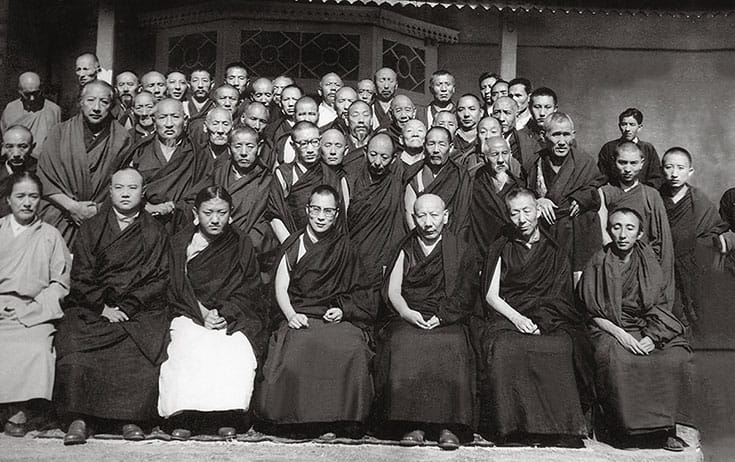
Bottom row (left to right): H.H. Dudjom Rinpoche, H.H. 16th Karmapa, H.H. 41st Sakya Trizin, H.H. 14th Dalai Lama, H.H. 6th Ling Rinpoche, Kyabjé Trijang Rinpoche, H.H. 19th Bakula Rinpoche
Four distinct schools of Buddhism — Nyingma, Sakya, Kagyu and Gelug — arose in Tibet at different periods of time based on lineages formed by practitioner teachers. While the four schools accept the fundamentals of Buddhism and the Mahayana ideal, each school developed its own distinguishing techniques and instructions to attain enlightenment. All schools are complete systems of Sutra and Tantra practice.
Nyingma: Padmasambhava founded the school in the 8th Century. This tradition classifies Buddhist teachings into nine vehicles with Ati Yoga or the Great Perfection (Dzogchen) as the highest path. Dzogchen teachings are aimed at attaining the natural primordial state of the innately luminous and pure mind. The school emphasizes three types of teachings descending from Padmasambhava — oral, pure vision and terma (hidden treasure).
Sakya: This tradition traces its origins to the Indian Mahasidda Virupa, who epitomized the Lam Dre or the “Path and Its Fruit” tradition in a short set of Vajra verses. Drogmi Shakya Yeshe (992-1074) traveled to India, where he received teachings from this master and later received more extensive Lam Dre teachings from the Indian Pandit Gayadhara, when he visited Tibet. Drogmi Shakya Yeshe’s disciple Khon Konchok Gyalpo built a monastery in 1073 and named it Sakya or grey earth, from which the school took its name. The unique characteristic of the Lam Dre tradition is the integration of all stages of the path into a single integrated framework.
Kagyu: This tradition traces its origins to the Indian Mahsidda Tilopa (989-1069), who epitomized the path through Mahamudra, the direct realization of the nature of mind. His principle student Naropa developed a set of practices known as the Six Yogas of Naropa. Marpa Chokyi Lodro (1012-1097) traveled to India and studied with Naropa. Marpa returned to Tibet bringing with him scriptures he translated into Tibetan. The Kagyu school emerged in Tibet from the teachings of Marpa and his student Milarepa, known as the great yogi of Tibet.
Gelug: Tsongkhapa (1357-1419) founded the school in the early 15th Century. He studied under masters from each tradition and became one of the most renowned and learned scholars of his time.
Gelug Tradition
The Kadam tradition is the foundation of the Gelug school. It’s based on the teachings of Atisha, a great Nalanda monastery master, who came from India to Tibet in the 11th Century. Kadam existed as an independent school for two hundred years before the teachings of Atisa and Tsongkhapa were combined to become the Gelug order. Tsongkhapa unified the fragmented Kadam lineages to preserve the complete tradition founded by Atisha, including the need for pure moral conduct as a basis for successful spiritual training and development.
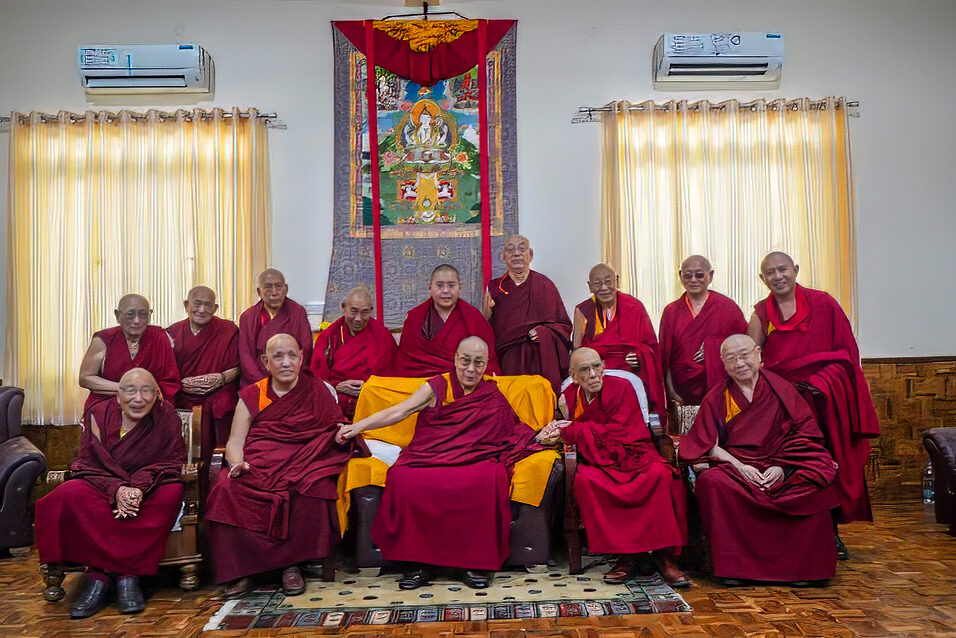
A central Gelug teaching is the Lam Rim, a systematic method to gradually cultivate an understanding and practice of the paths that lead to Enlightenment. The school also emphasizes the monastic system and observation of Vinaya vows as a basis for the study and practice of the combined paths of Sutra and Tantra, that unite the view of the Middle Way school with the practice of Anuttrayoga Tantra. Tsongkhapa’s collected works and other texts, including those written by the 17 great Nalanda masters, are studied in great detail and investigated through logic, in the form of debate, to penetrate the depths of their meaning.
With the founding of Gaden monastery near Lhasa in 1409, Tsongkhapa laid-down the foundation for what would later be called the Gelug school. Tsongkhapa’s followers were first known as the Gadenpas or Riwo Gadenpas and only later became known as Gelupgas. After Tsongkhapa’s passing, his teachings were held and spread by his two main disciples Gyaltsab Dharma Rinchen (1364-1432) and Khedrup Gelek Pelsang (1385-1438), who became Gaden Tripas or the holder of the Gaden throne. The lineage continues uninterrupted with the 102nd Gaden Tripa, who is the current head of the Gelug school. It is an elected position which is held for seven years. Other disciples of Tsongkhapa established important monasteries of this school — Drepung, Sera, Tashilunpo, Gyume Lower Tantric College and Gyuto Upper Tantric College.
Tsongkhapa
Je Tsongkhapa Lobsang Drakpa was born in the Tsongkha region of Amdo in Eastern Tibet. He received his first precepts from the 4th Karmapa, Rolpe Dorje, and was raised by a master of the Yamantaka Tantra, the yogin Dobdrup Rinchen. Tsongkhapa traveled to Central Tibet at 16, where he studied aspects of Sutra and Tantra with many teachers, including the great Sakya Lama Rendawa Shyonnu Lodro and the Nyingma Dzogchen master Lhodrak Namkha Gyaltsen. He had a particular interest in the Madhyamika (Middle Way) teachings of Najarjuna, a 2nd Century Nalanda monastery master, who is considered to be one of the most important Buddhist philosophers after the historical Buddha.
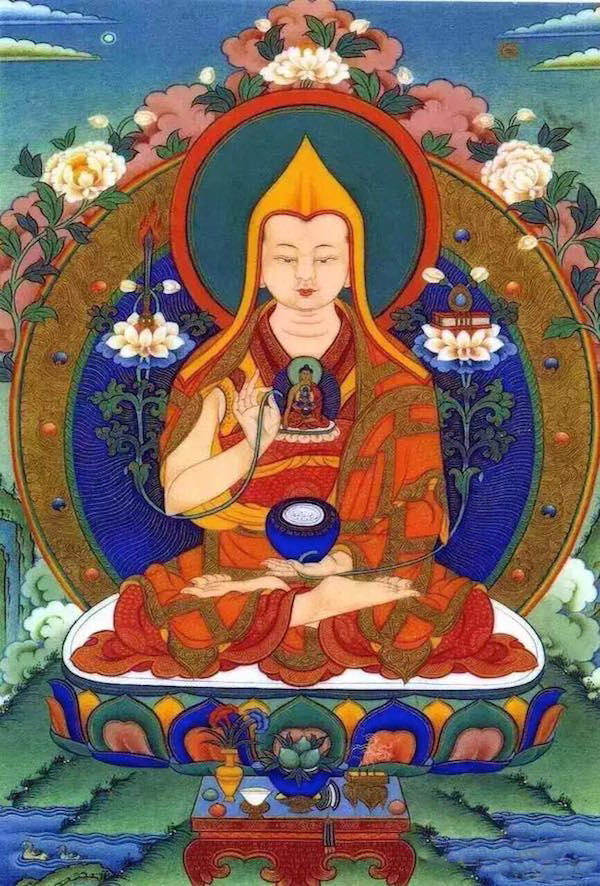
Tsongkhapa’s goal was to completely comprehend the diversity of Buddha’s teachings. He read almost all of the Indian and Tibetan Buddhist literature available in his day, studied in many different Buddhist schools and did extensive meditation retreats. He explained his understanding in 18 volumes of collected works. One of the distinguishing features of Tsongkhapa’s writings is his simplification and clarification of the philosophy and tantric practices set forth by prior masters, including the great ones from Nalanda monastery. He worked methodically to understand and elucidate the difficult points in prior writings. In his two main treatises — the Lamrim Chenmo and Ngakrim Chenmo, he systemactially sets forth the graduated paths to enlightenment through cultivating a direct experience of the union of bliss and emptiness.
Relevance in the Modern World
Although the Buddhist contemplative tradition and modern science evolved from different historical roots, they share a tradition of investigation to understand the highest level of truth through realization and practice to see it directly. They both view life in terms of complex inter-relationships and the natural laws of cause and effect. Over the last 30 years, scientists have become interested in the rich Buddhist classification of phenomena and mental states, as well as contemplative techniques for refining mental qualities. Inter-disciplinary dialogues and studies have been taking place on a wide range of topics, including our capacity to transform and regulate emotions through Buddhist practices. Results include finding ways to reduce stress in modern life and the tangible effects of cultivating compassion.
